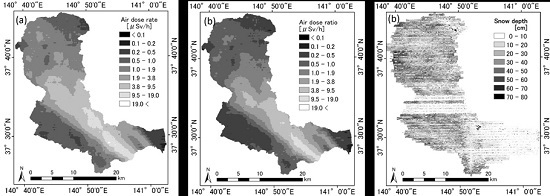Investigation of Snow Cover Effects and Attenuation Correction of Gamma Ray in Aerial Radiation Monitoring
Abstract
:1. Introduction
2. Materials and Methods
2.1. Measurement Area
2.2. ARM
2.3. Ground Measurement
2.4. LiDAR
3. Results
3.1. ARM Data before and after Snowfall
3.2. Snow Depth by LiDAR Data
4. Discussions
4.1. Correction Method of Snow Attenuation for ARM
4.2. Simulation of Gamma Ray Attenuation with PHITS2
4.3. Correction Result of Attenuation by Snow Layer
4.3.1. Correction with an Average Snow Density
4.3.2. Correction with Density as a Function of Snow Depth
4.3.3. Correction with the Hydrological Model
5. Conclusions
Acknowledgments
Author Contributions
Conflicts of Interest
References
- Sanada, Y.; Sugita, T.; Nishizawa, Y.; Kondo, A.; Torii, T. The aerial radiation monitoring in Japan after the Fukushima Dai-ichi nuclear power plant accident. Prog. Nucl. Sci. Technol. 2014, 4, 76–80. [Google Scholar] [CrossRef]
- Lyons, C.; Colton, D. Aerial measurement system in Japan. Health Phys. 2012, 102, 482–484. [Google Scholar] [CrossRef] [PubMed]
- US, Japan Develop a New Method for Radiological Dose Assessment in Area Surrounding Fukushima Daiichi Nuclear Power Plants. Available online: https://nnsa.energy.gov/mediaroom/pressreleases/nnsajaea062713 (accessed on 26 September 2016).
- Sanada, Y.; Mori, A.; Ishizaki, A.; Munakata, M.; Nakayama, S.; Nishizawa, Y.; Urabe, Y.; Nakanishi, C. Radiation monitoring using manned helicopter around the Fukushima Nuclear Power Station in the fiscal year 2014. JAEA Res. 2015. (In Japanese) [Google Scholar] [CrossRef]
- International Atomic Energy Agency (IAEA). Guidelines for Radioelement Mapping Using Gamma Ray Spectrometry Data; IAEA: Vienna, Austria, 2003. [Google Scholar]
- Bergstrom, S.; Brandt, M. Snow mapping and hydrological forecasting by airborne γ-ray spectrometry in Northern Sweden. In Proceedings of the Tsunami Symposium, Hamburg, Germany, 15–16 August 1983; pp. 421–427.
- ENDRESTØL, G.O. Principle and method for measurement of snow water equivalent by detection of natural gamma radiation. Hydrol. Sci. Bull. 1980, 25, 77–83. [Google Scholar] [CrossRef]
- Nagaoka, T.; Sakamoto, R.; Saito, K.; Tsutsumi, M.; Moriuchi, S. Diminution of Terrestrial gamma ray exposure rate due to snow cover. Jpn. J. Health Phys. 1988, 23, 309–315. (In Japanese) [Google Scholar] [CrossRef]
- Latifi, H.; Heurich, M.; Hartig, F.; Müller, J.; Krzystek, P.; Jehl, H.; Dech, S. Estimating over- and understorey canopy density of temperate mixed stands by airborne LiDAR data. Forestry 2016, 89, 69–81. [Google Scholar] [CrossRef]
- Li, Z.; Guo, X. Remote sensing of terrestrial non-photosynthetic vegetation using hyperspectral, multispectral, SAR, and LiDAR data. Prog. Phys. Geogr. 2016, 40, 276–304. [Google Scholar] [CrossRef]
- Liu, X. Airborne LiDAR for DEM generation: some critical issues. Prog. Phys. Geogr. 2008, 32, 31–49. [Google Scholar]
- Sato, T.; Niita, K.; Matsuda, N.; Hashimoto, S.; Iwamoto, Y.; Noda, S.; Ogawa, T.; Iwase, H.; Nakashima, H.; Fukahori, T.; et al. Particle and heavy ion transport code system, PHITS, version 2.52. J. Nucl. Sci. Technol. 2013, 50, 913–923. [Google Scholar] [CrossRef]
- Davison, B. Snow Accumulation in a Distributed Hydrological Model. Master’s Degree, University of Waterloo, Waterloo, ON, Canada, 2004. [Google Scholar]
- Suizu, S. A snowmelt and water equivalent snow model applicable to an extensive area. J. Jpn. Soc. Snow Ice 2002, 64, 617–630. (In Japanese) [Google Scholar] [CrossRef]
- Japan Meteorological Agency. Temperature. Available online: http://www.jma.go.jp/en/amedas/ (accessed on 1 June 2016).
- Ohta, T. A distributed snowmelt prediction model in mountain areas based on an energy balance method. Ann. Glaciol. 1994, 19, 107–113. [Google Scholar]
- NASA’s Earth Observing System. Available online: http://eospso.nasa.gov/ (accessed on 1 June 2016).
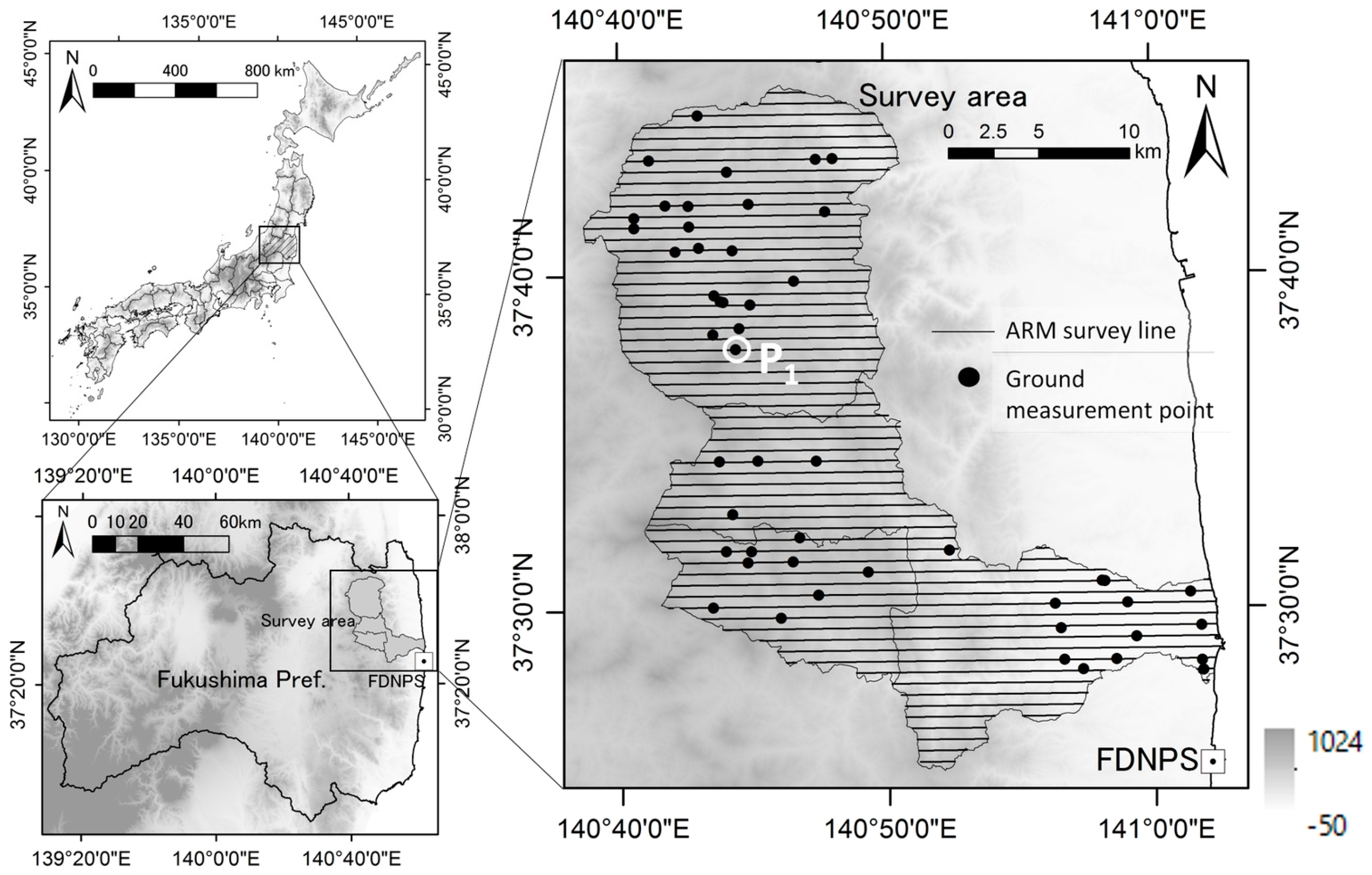
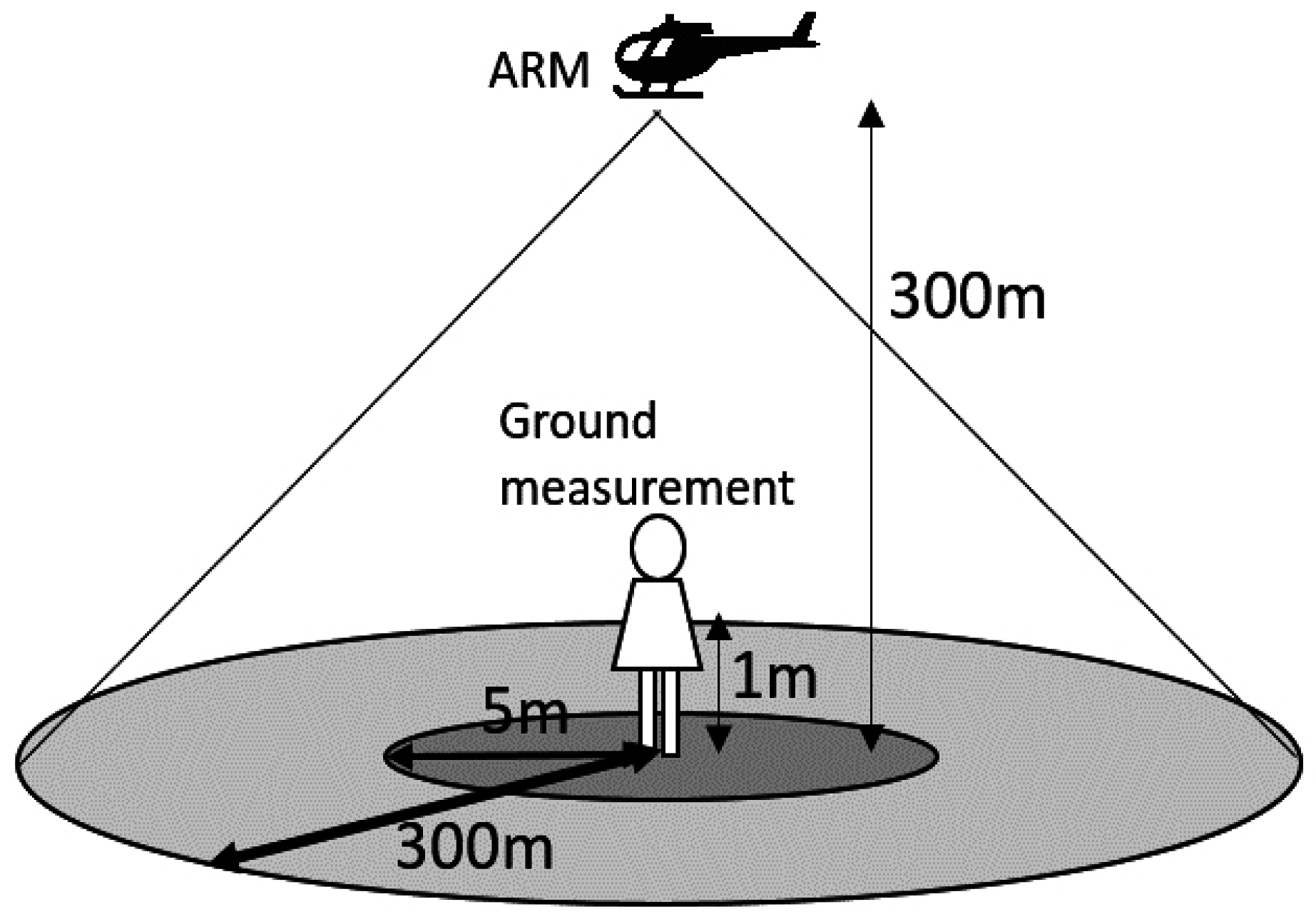
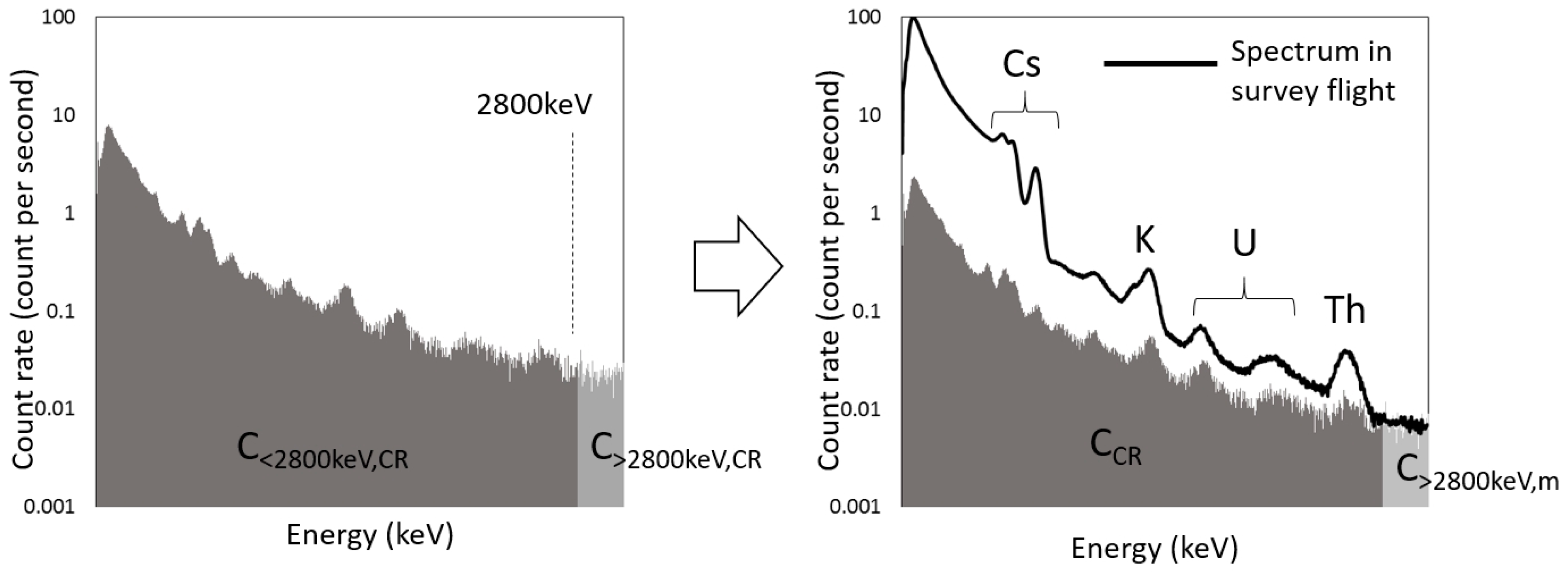
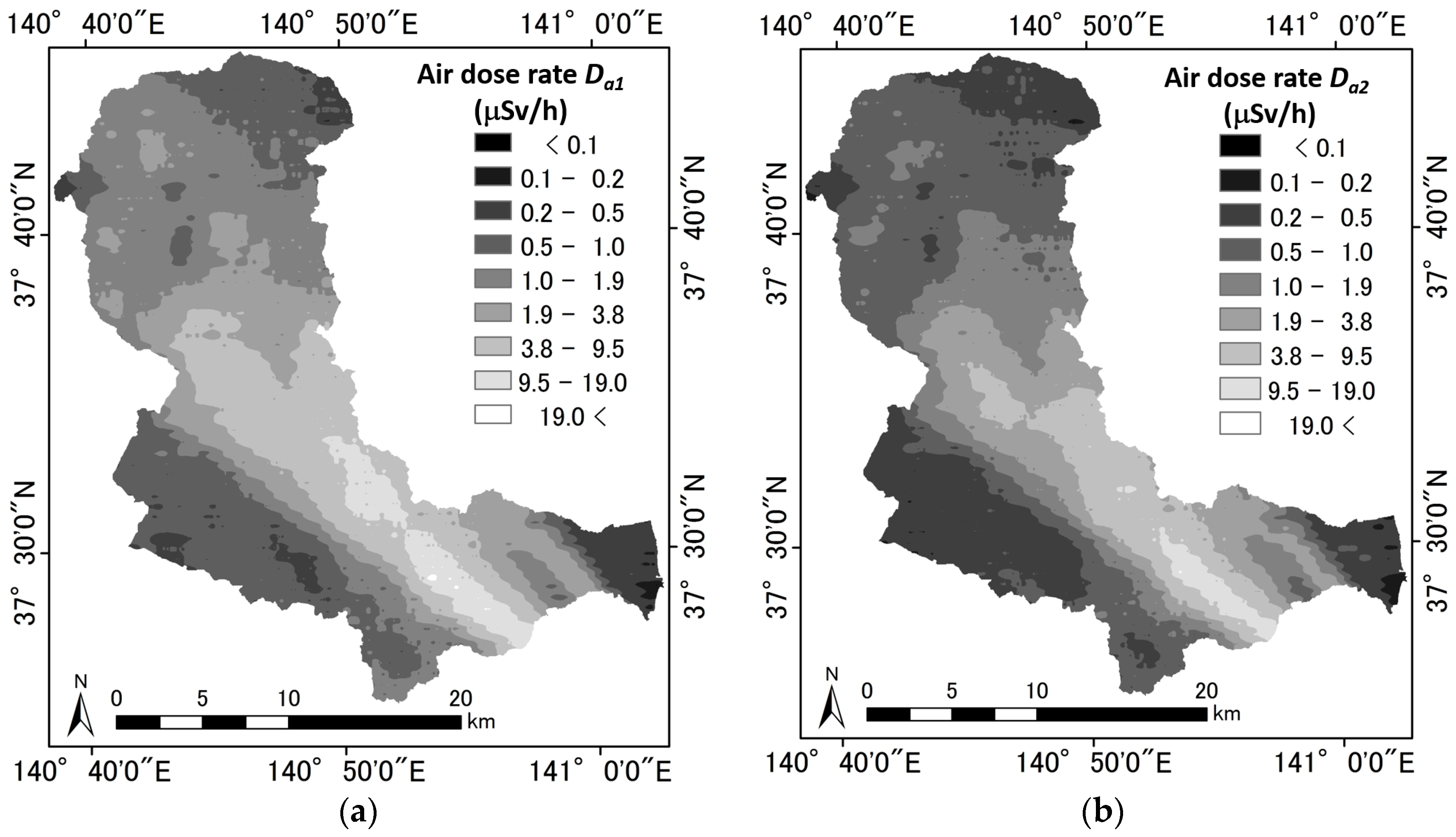
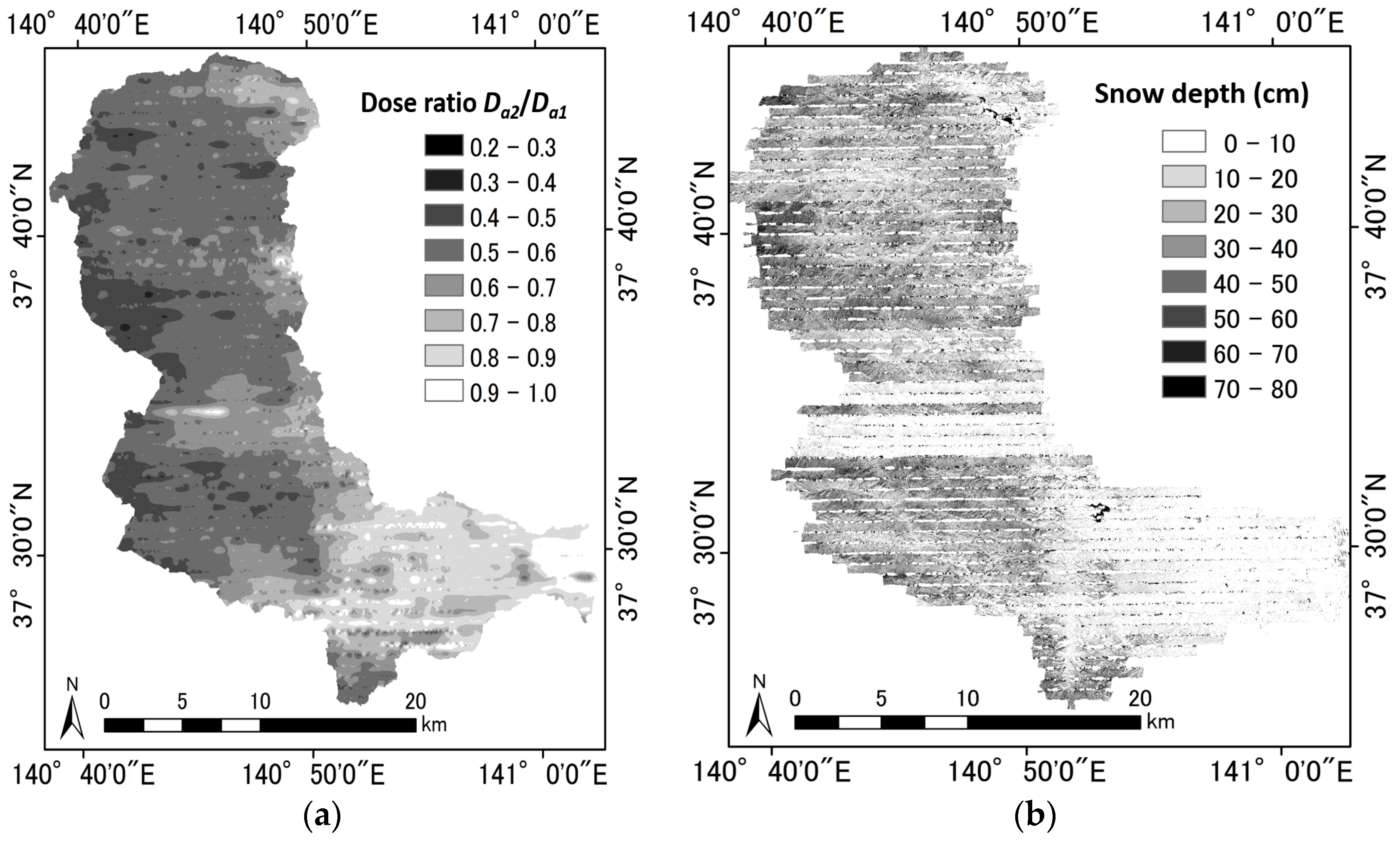
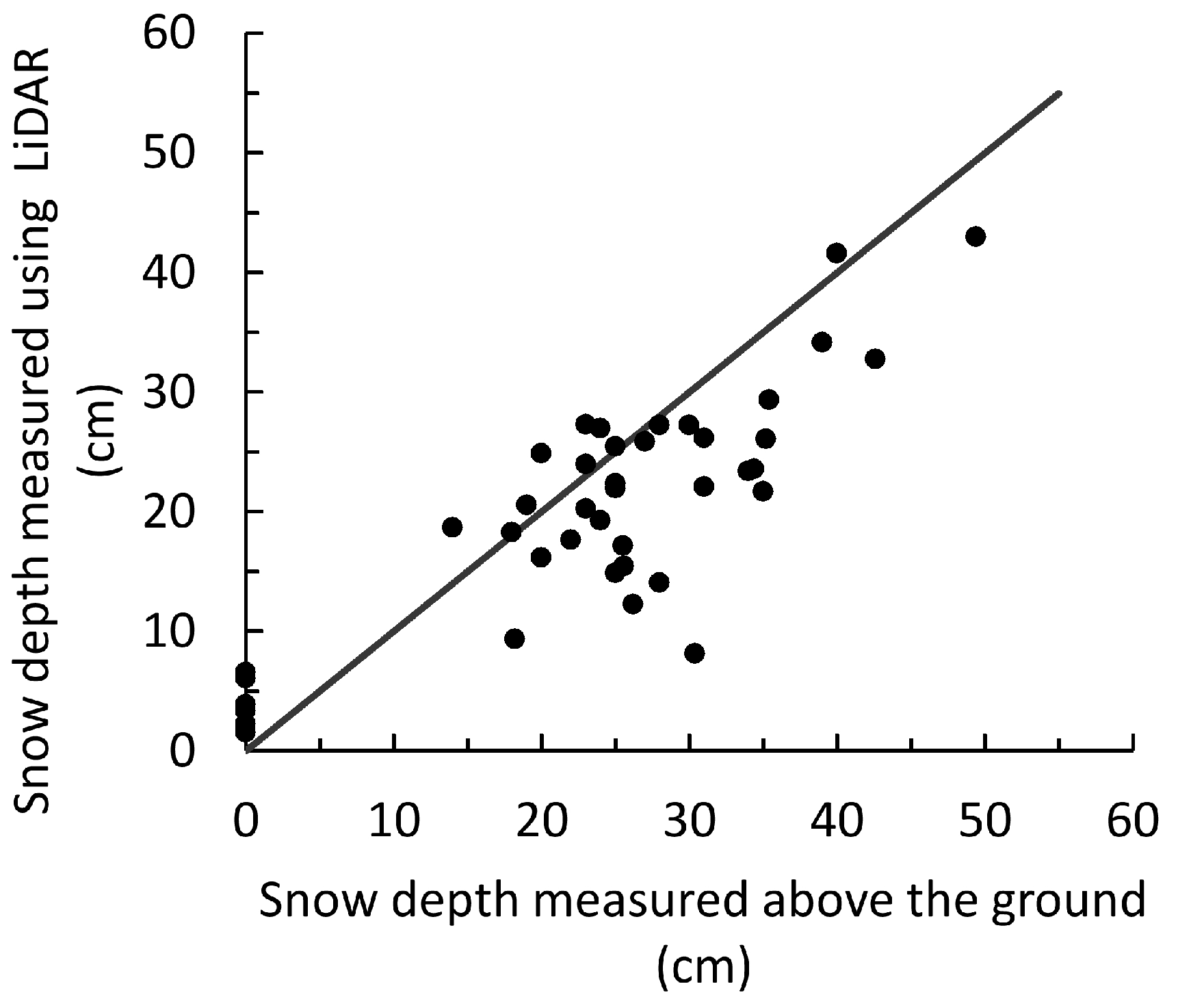

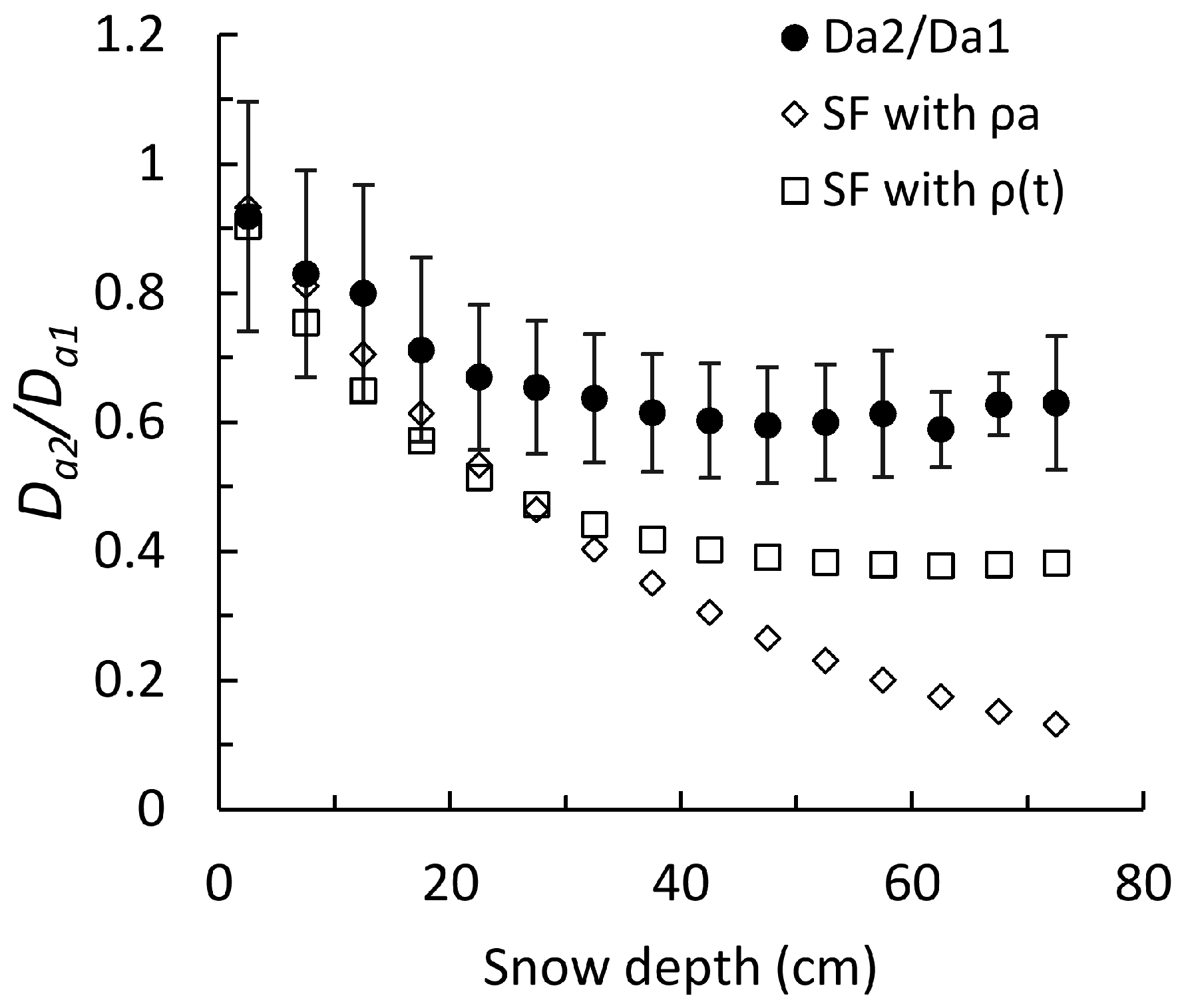

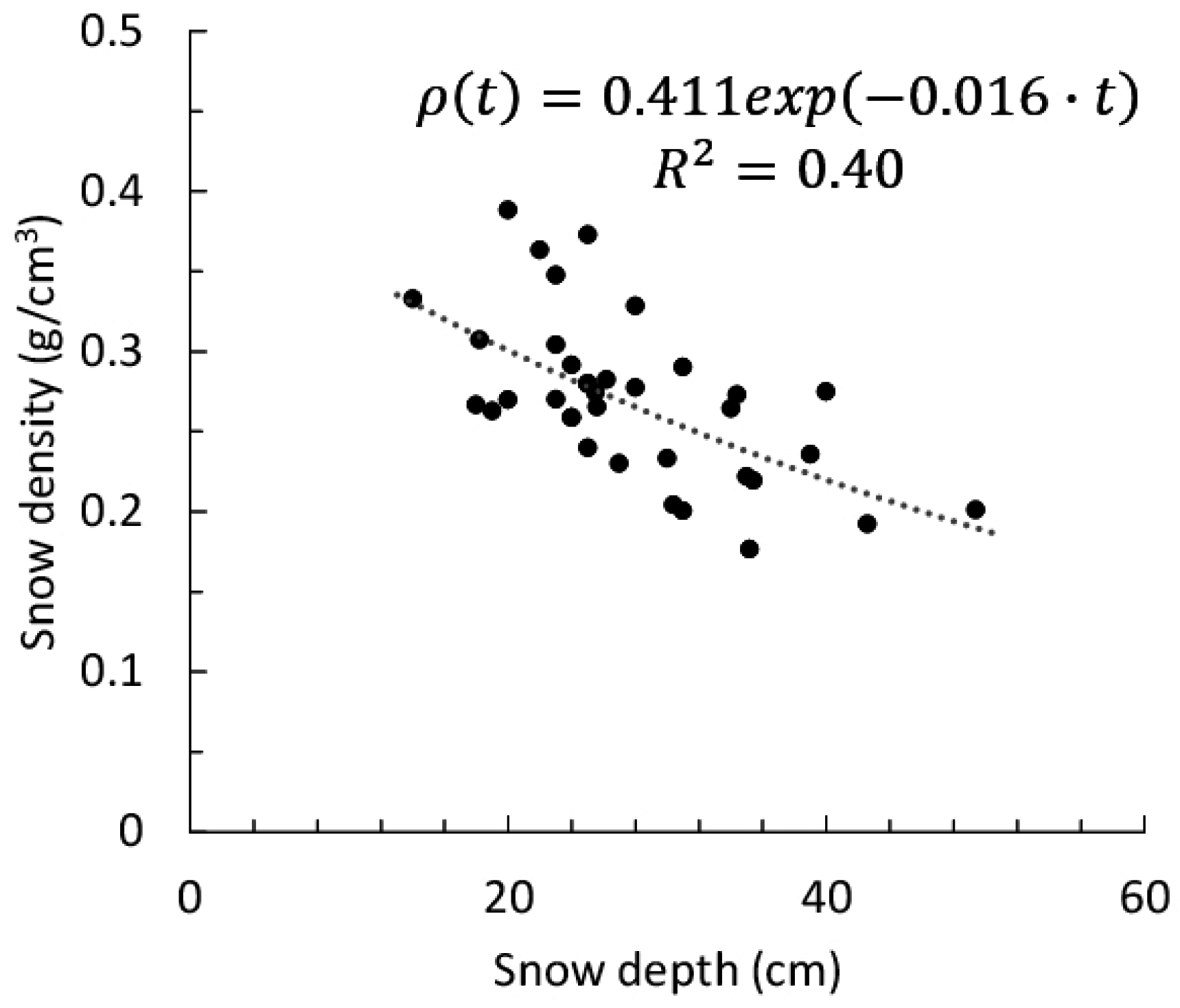
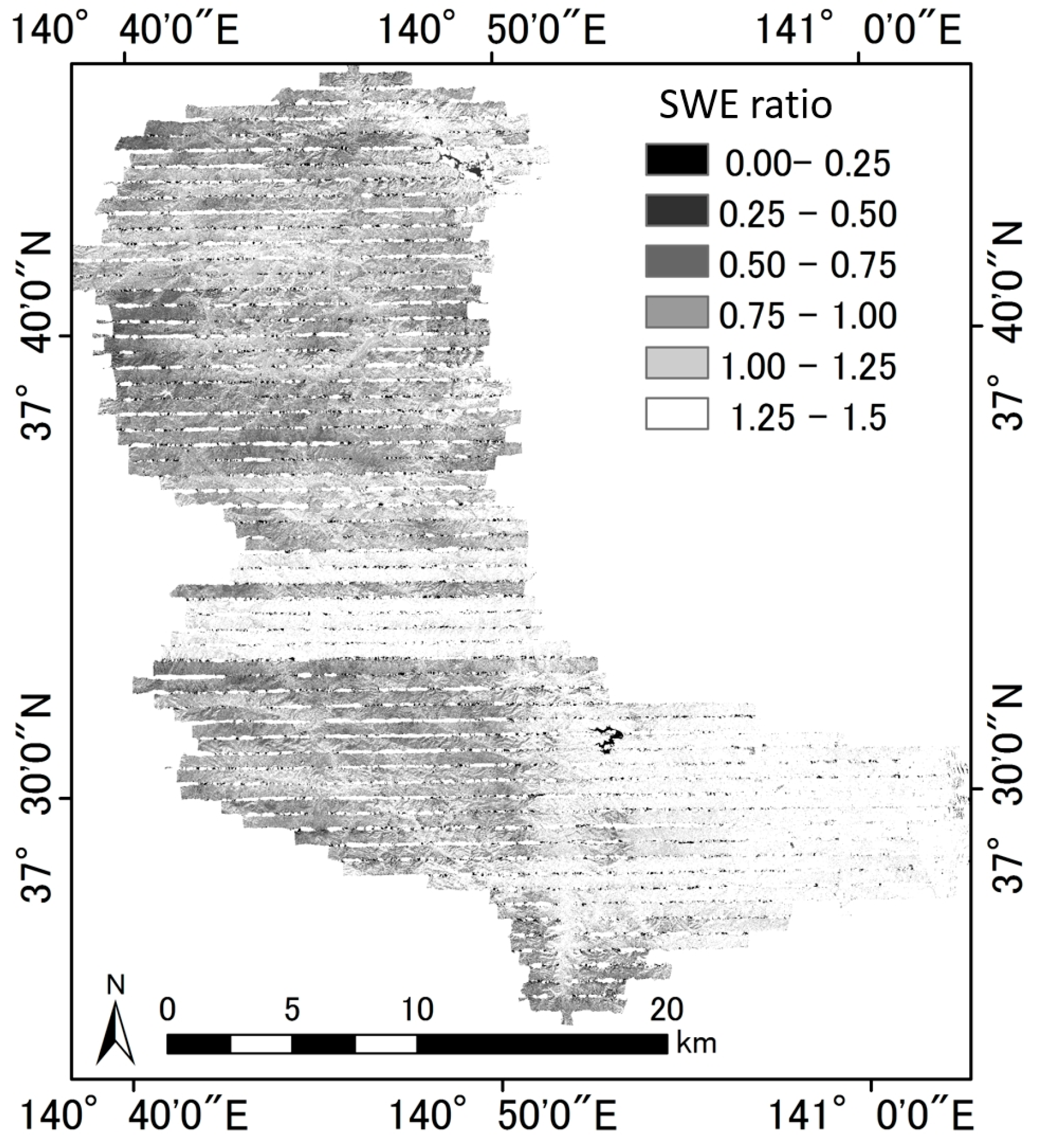
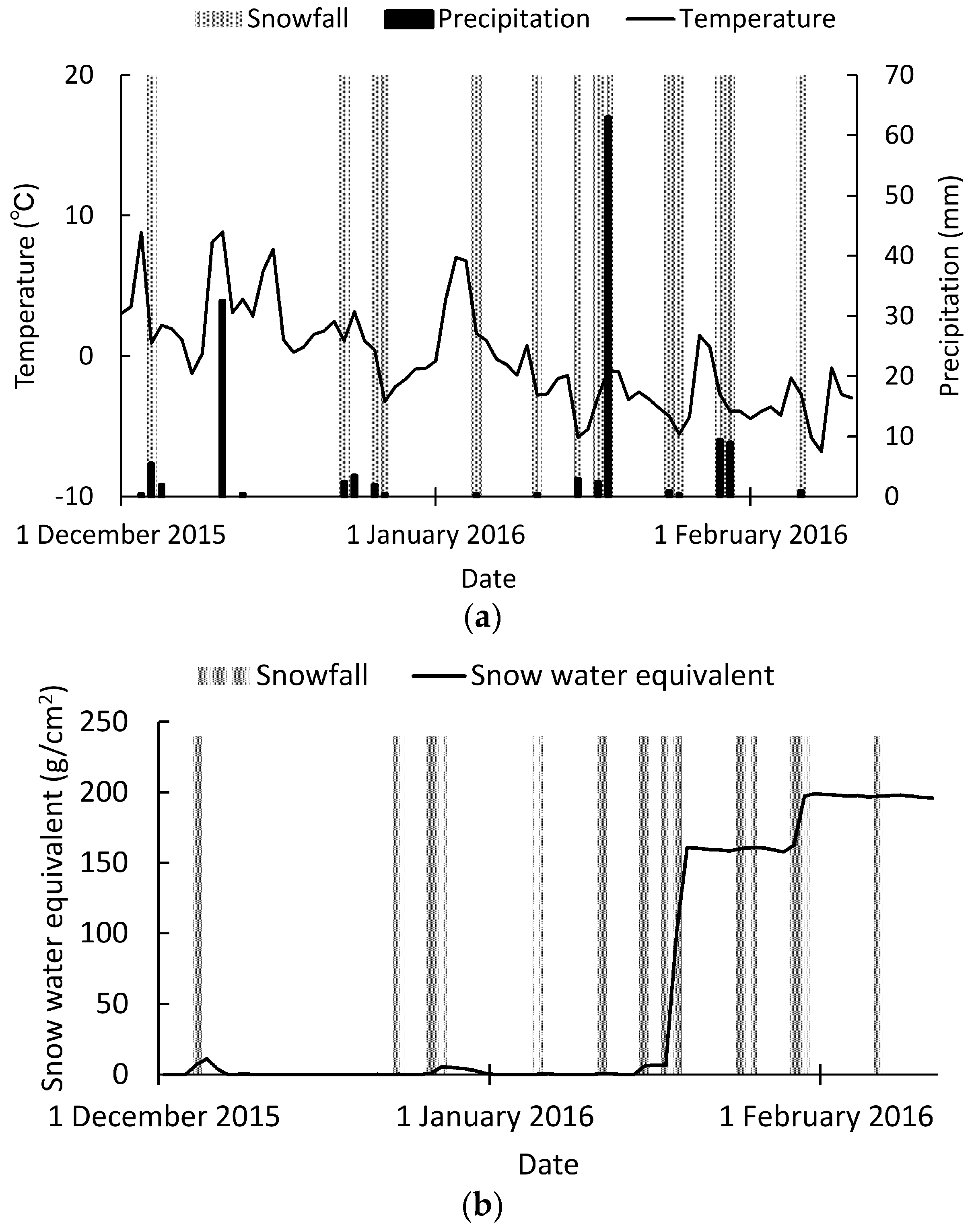
| Parameter | Value |
|---|---|
| Flight altitude | 450 m |
| Flight velocity | 28 m/s |
| Frequency of laser firing | 200 kHz before snowfall 100 kHz after snowfall |
| Scan frequency | 75 Hz |
| Scan angle | ±30° |
| Wave length of laser | 1550 nm |
| Resolution of target | 0.5 m |
| Precision of elevation | 7 cm |
© 2016 by the authors; licensee MDPI, Basel, Switzerland. This article is an open access article distributed under the terms and conditions of the Creative Commons Attribution (CC-BY) license (http://creativecommons.org/licenses/by/4.0/).
Share and Cite
Ishizaki, A.; Sanada, Y.; Mori, A.; Imura, M.; Ishida, M.; Munakata, M. Investigation of Snow Cover Effects and Attenuation Correction of Gamma Ray in Aerial Radiation Monitoring. Remote Sens. 2016, 8, 892. https://doi.org/10.3390/rs8110892
Ishizaki A, Sanada Y, Mori A, Imura M, Ishida M, Munakata M. Investigation of Snow Cover Effects and Attenuation Correction of Gamma Ray in Aerial Radiation Monitoring. Remote Sensing. 2016; 8(11):892. https://doi.org/10.3390/rs8110892
Chicago/Turabian StyleIshizaki, Azusa, Yukihisa Sanada, Airi Mori, Mitsuo Imura, Mutsushi Ishida, and Masahiro Munakata. 2016. "Investigation of Snow Cover Effects and Attenuation Correction of Gamma Ray in Aerial Radiation Monitoring" Remote Sensing 8, no. 11: 892. https://doi.org/10.3390/rs8110892




